Complete Solutions to JEE Main And Advanced of chapter ARYL HALIDE AND PHENOLS of Class 12 book with complete answers and questions
| Class 12 | CHEMISTRY |
| Chapter | ARYL HALIDE AND PHENOLS |
| IIT-JEE PREVIOUS YEAR | JEE Main And Advanced |
| Number Of Questions | 50 |
| Academic Year | 2023-24 |
For the identification of beta-naphtho1 using dye test it is necessary to _______ of beta-naphtho1 .
View SolutionThe major product of the following reaciton is
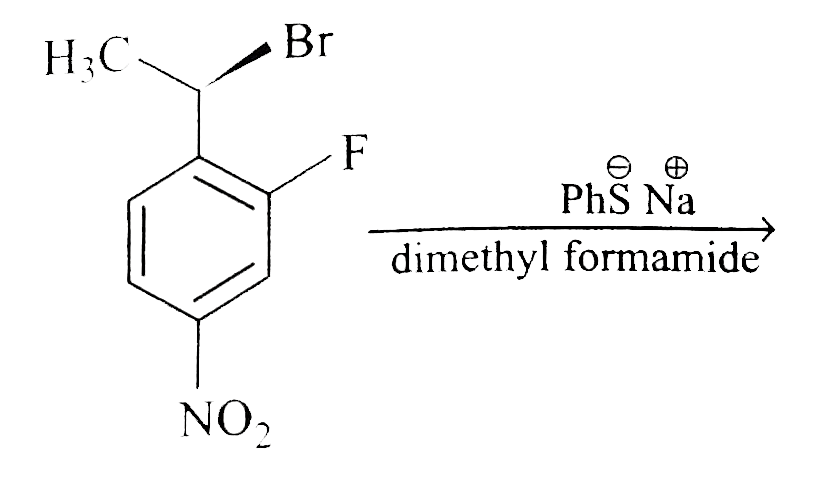
View SolutionComplete the following reaction

View SolutionIn the reaction of p-chlorotoluene with `KNH_(2)` is liguid `NH_(3)` the major product is .
View SolutionPhenol reacts with bromine in carbon disulphide at low temperature to give
View SolutionWhen phenol is treated with excess of bromine water, it gives
View SolutionThe reactivity of compound `Z` with different halogens under appropriate conditions is gives below-

The observed pattern of electrophilic substitution can be explained by-
View SolutionThe major product `(s)` of the following reaction is (are)

View SolutionIn the following reacation. The product(s) formed is/are
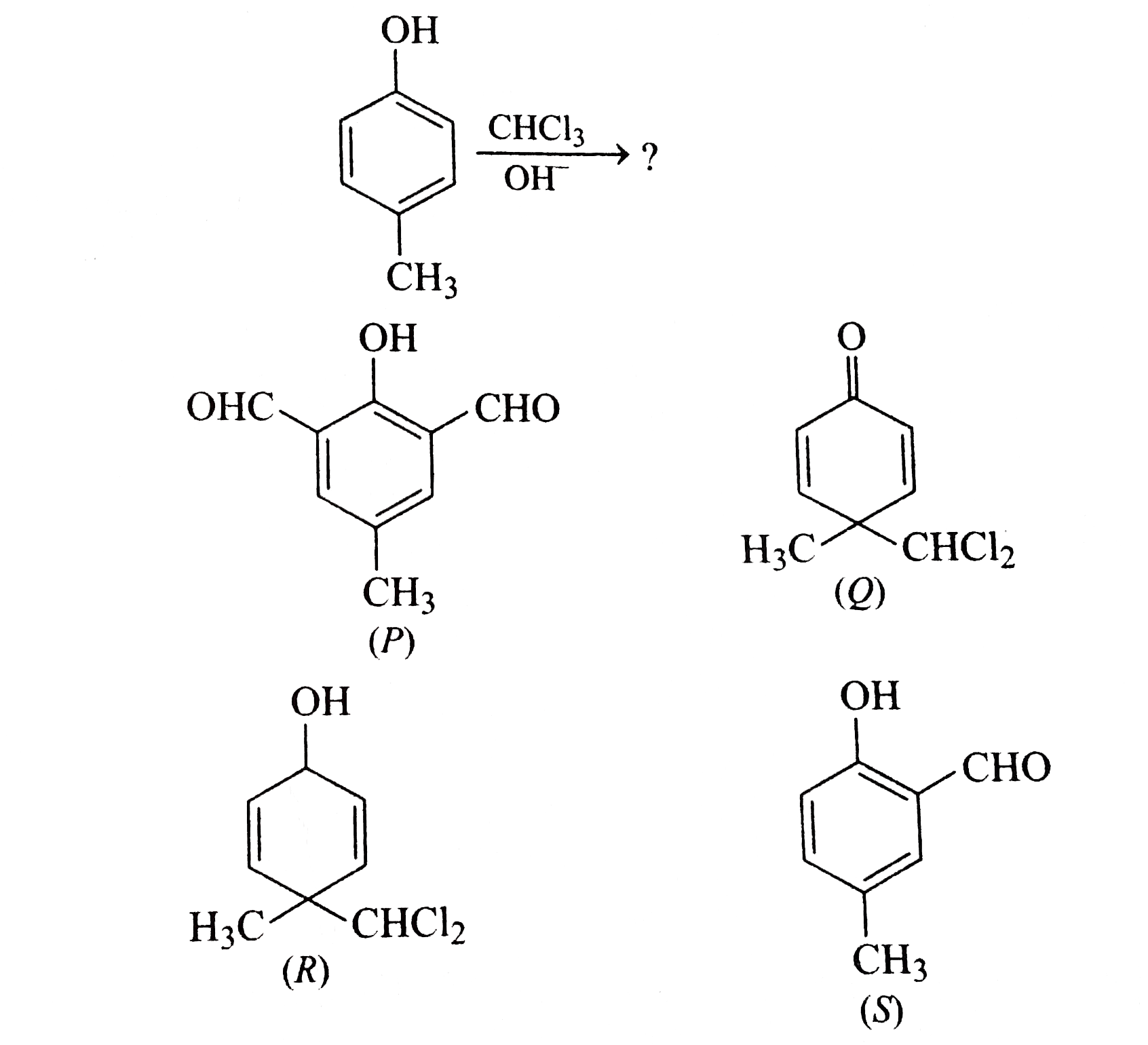
View SolutionIn the reaction
 the intermediate(s) is/are:
the intermediate(s) is/are:
View SolutionThe ether
 when treated with HI produces:
when treated with HI produces:
View SolutionWhen phenol reactes with `CHCl_(3)` and NaOH followed by acidification, salicyladehyde is obtained. Which of the following species are involed in the above-mentioned reaction as intermediates ?
View SolutionAryl halides are less reactive towards nucleophilic substitution reaction as compared to alyl halides due to
View SolutionAssertion: Bromobenzene upon reaction with `Br_(2)//Fe` gives 1,4-dibromobenzene as the major product
Reason In bromobenzene the inductive effect of the bromo group is more dominant than the mesomeric effect in directing the incoming electrophile .
View SolutionPhenol is more reactive than benzene towards electrophilic substitution reaction.
In case of Phenol, the intermediate carbocation is more resonance stabilised.
View SolutionStatement I Benzonitrile is prepared by the reaction of
chlorobenzene with potassium cyanide.
Statement II Cyanide `(CN^(-))` is a strong nucleoohile.
View SolutionAssertion: Aryl halides undergoes nucleophilic substitution with ease
Reason The carbon halogen bond in aryl halides has partial double bond character .
View SolutionReimer-Tiemann reaction introduces an aldehyde group on to the aromatic ring of phenol, ortho to the hydroxyl group. This reacrtion involves electrophilic aromatic subsititution. It is a general method for the synthesis of subsituted salicyladehydes as depiced below:

The structure of the intremediate (I) is:
View SolutionReimer-Tiemann reaction introduces an aldehyde group on to the aromatic ring of phenol, ortho to the hydroxyl group. This reacrtion involves electrophilic aromatic subsititution. It is a general method for the synthesis of subsituted salicyladehydes as depiced below:
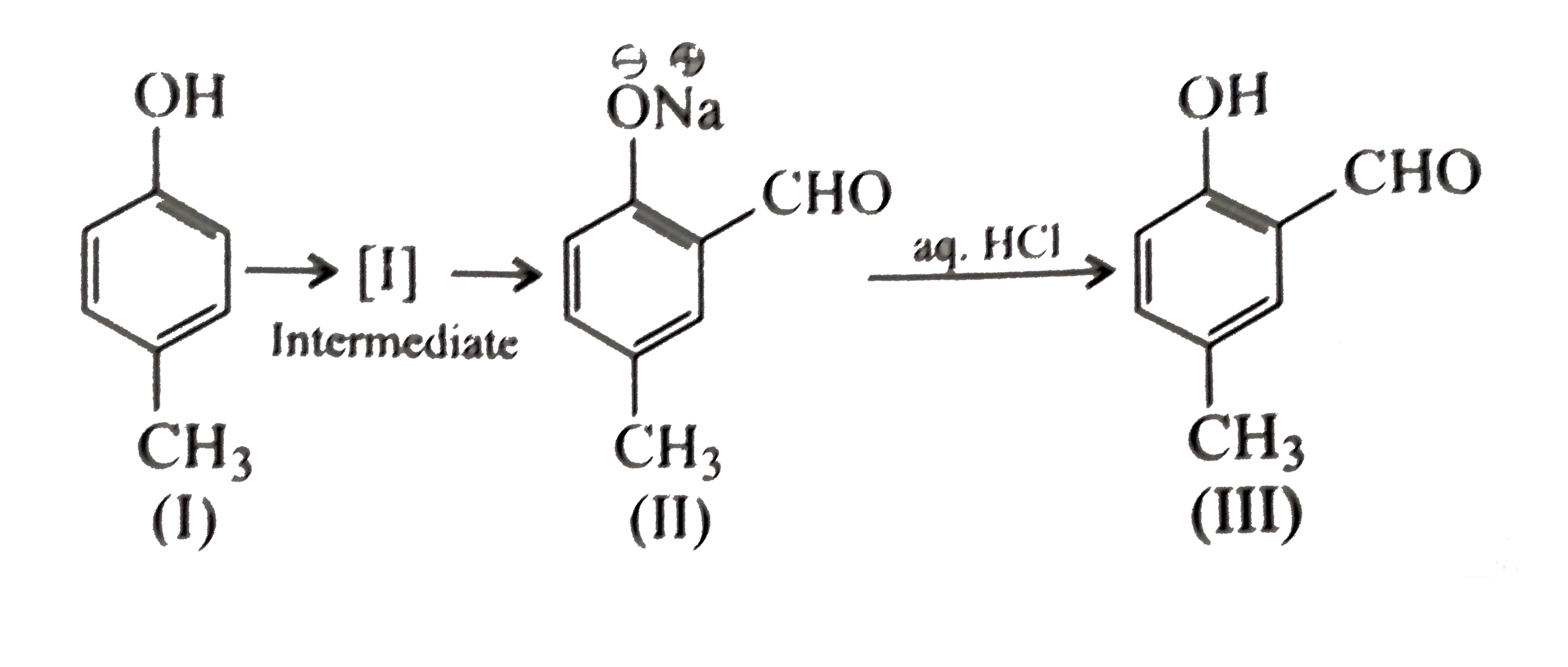
The electrophile in this reaction is:
View SolutionReimer-Tiemann reaction introduces an aldehyde group on to the aromatic ring of phenol, ortho to the hydroxyl group. This reacrtion involves electrophilic aromatic subsititution. It is a general method for the synthesis of subsituted salicyladehydes as depiced below:

Which one of the following reagents is used in the above reaction ?
View SolutionThe number of resonannce structure for N is
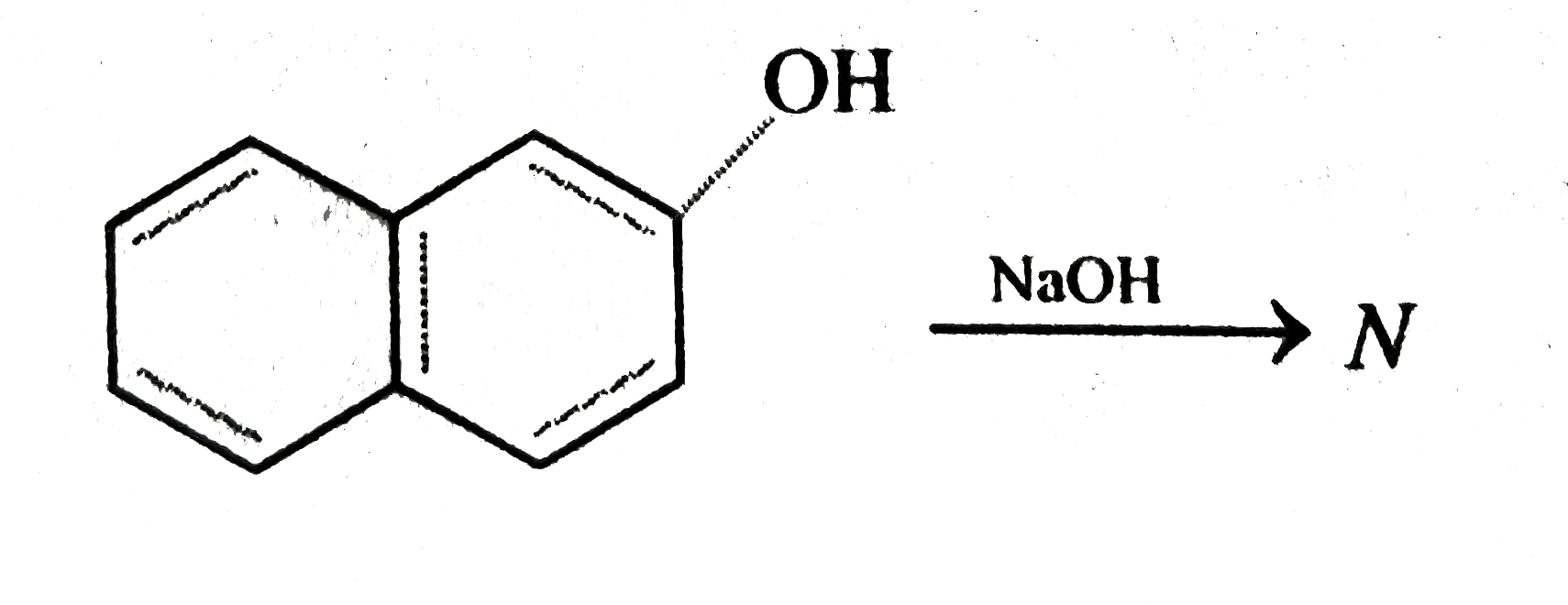
View SolutionAmongst the three isomers of the nitrophenol, the one that is least soluble in water is …………
View SolutionPhenol is acidic because of the resonance stabilisation of its conjugate base, namely ……….
View SolutionFormation of phenol from chlorobenzene is an example of
…. Aromatic substitution.
View SolutionThe acidity of phenol is due to the ….. Of its anion.
View SolutionCarry out the following conversation.
Phenol to aspirin
Benzoic acid to meta- fluorobenzoic acid in not more than
three steps.
View SolutionHow would you synthesise 4-methoxyphenol from
bromobenzene in not more than five steps? State clearly the
reagents used in each step and show the structure of the intermediate compounds in your synthetic scheme.
View SolutionWhat would be the major product in the following reaction?
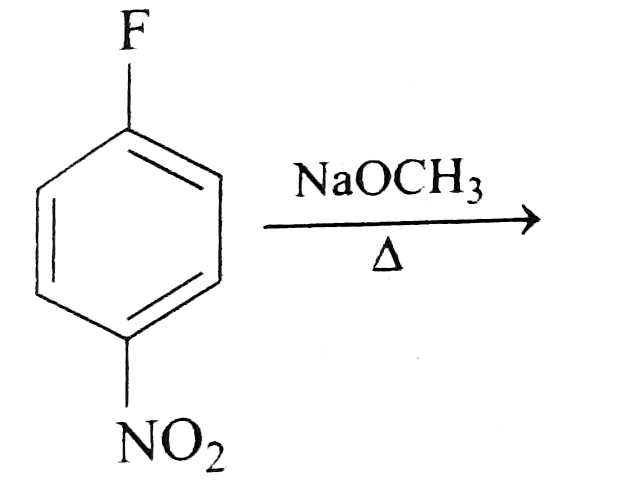
View SolutionExplain briefly the formation of the products giving the
structures of the intermediates.
View SolutionComplete the following, giving the structures of the principal
organic products
View SolutionHow will you prepare m-bromoiodobenzene from benzene
(in not more than 5-7 steps)?
View SolutionExplain the following in one or two sentence only: 'Phenol is an acid, but it does not react with sodium bicarbonate'.
View SolutionComplete the following with appropriate structures:

View SolutionCompound `A,C_(7)H_(8)O`, is insoluble in water, dilute `HCl`, and aquenous `NaHCO_(3)`, it dissolves in dilute `NaOH`. When `A` is treated with bromine water is is converted rapidly into a compound of formula `C_(7)H_(5)Obr_(3)`. The structure of `A` is
View SolutionGive reason in one or two sentences form the following: 'o-nitrophenol is steam volatile, whereas p-nitrophenol is not'.
View SolutionWhich of the following compounds undergoes
nucleophilic substitution most readly?
View SolutionThe reaction of toluence with chlorine In this presence
of light gives
View SolutionWhen phenol is refluxed with allyl bromide in acetone
solution in the presence of anhydrous potassiym
carbonate a product may be isolated which, on
heating to `200^(@)C` is converted mainly to
View SolutionWhich one of the following compounds will be most
readily hydrolysed in aqueous alkali?
View SolutionThe major substitution product of the following
reaction

View SolutionWhich of the following reaction will give a visible change?
View SolutionConsider the following reaction
`Phenol +CH_(2)(excess)+H_(2)SO_(4))to`
The expected product(s) of the above reaction is/are
View SolutionIn which of the following reaction(s), the product shown will
not be formed?
View SolutionConsider the following reaction to answer the next three
questions:
In the above reaction. The reactive intermediate formed in
the first step(step-i) is
View SolutionConsider the following reaction to answer the next three
questions: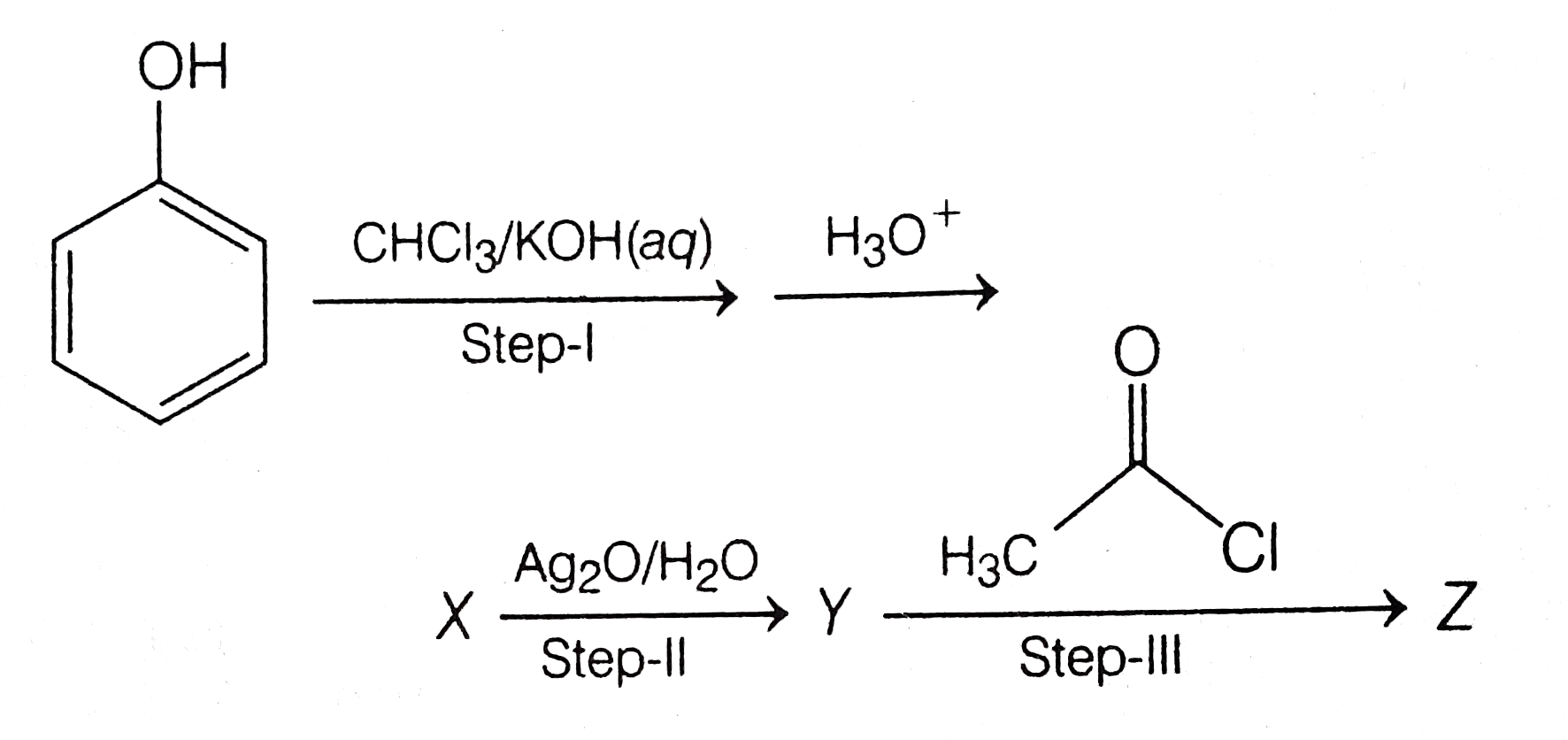
The product Z in the above reaction is
View SolutionConsider the following reaction to answer the next three
questions:
Y can also be obtained in the above reaction by reacting
phenol with
View SolutionAsscertain Phenol on treatment with `Br_(2)-H_(2)O` gives
2,4,6-tribromo phenol. ltReasongt Due to strong activation by hydroxyl group
trisubstitution takes place.
View SolutionAssertion p-fluoro nitrobenzene is more reactive than
p-bromo nitrobenzene in the aromatic necleophilic
substitution reaction with acqueous `NaOH`
Reason Addition of nuceophilie on the a-carbon of aryl
halide is the rate determing step is `S_(N)Ar` reaction.
View SolutionAn organic compound (X) has molecular formula `C_(7)H_(6)O_(2)`
and it does not effervesces with `NaH` A on treatment with
excess of `HBr(aq)` gives `Y(C_(6)H_(6)O_(2))` and `CH_(2)Br_(2)`. Y forms a
violet coloured solution with `FeCl_(3)`. If X treated with `Br_(2)Fe,`
how many different monobrominaiton product would result?
View SolutionIf toluene is monochlorinated, how many different
monochloro derivatives would be expected?
View Solution
JEE Main And Advanced questions and complete solutions for chapter ARYL HALIDE AND PHENOLS of IIT-JEE PREVIOUS YEAR (CHEMISTRY) of Class 12